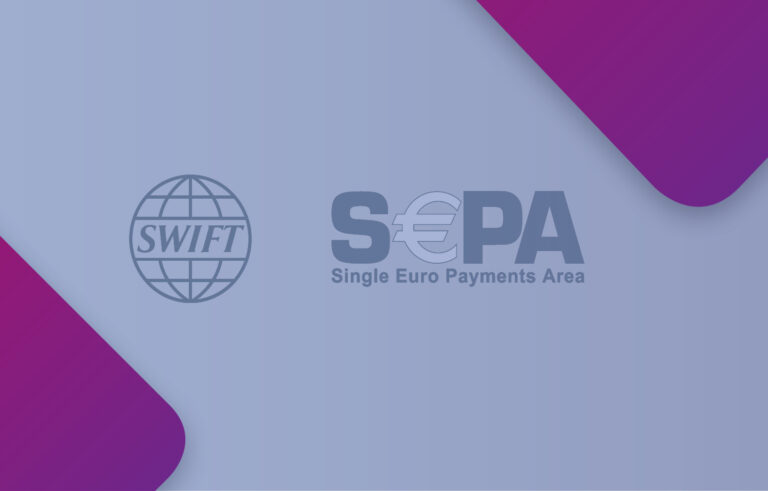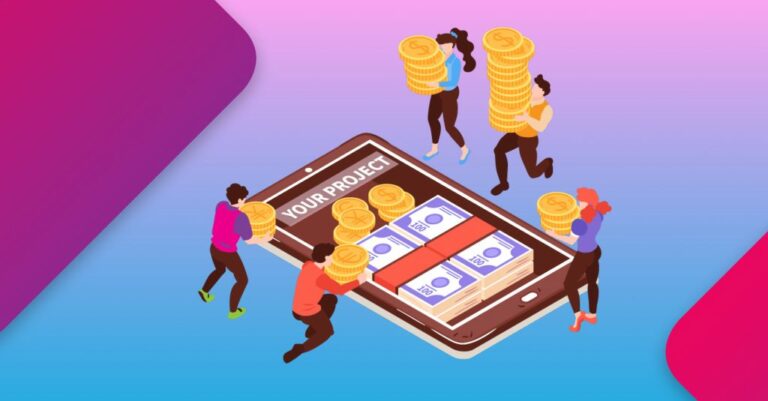
Users’ data – their requests and purchases, paying capacity and preferred payment models – all form the basis for creating UX design (User Experience), which is one of the most interesting and important topics in e-commerce. Bilderlings Pay has studied the trends in the development of online resources design based on a buyer’s persona.
UX design means creating an interface centered on the user’s experience. For example, a system recognizes, based on certain criteria, the device a client is using to access an online store and predicts their paying capacity. This type of design, done right, simplifies communication between sellers and their target audiences and suggests how an interface might be tailored to a specific consumer.
This can be illustrated by personal experience: for example, the author of this article recently had to buy a smartwatch and a pair of headphones. Naturally, I take it as a fact of life that I’ve begun to receive, in the form of targeted advertising, various offers from e-tailers selling gadgets and accessories.
This type of marketing increases e-commerce sales, so it has been adopted by large marketplaces and, increasingly, even by small e-tailers in recent years.
Minimization of interface
Users’ interaction with a product through the interface of their device, which can be seen as a filler piece between e-tailers and buyers, is becoming more and more invisible. It’s common knowledge that aggressive offers can put buyers off purchases, right? Large data analysis is used to predict the actions of potential clients, as well as chat bots and voice interfaces that understand commands given in simple language.
Ideally, the trend in UX design development is to ensure that a user will be able to perform a chosen action at will, without encountering any issues, which is of mutual benefit to buyer and seller. For example, this could mean a completed payment and an online purchase having been made successfully.
There are many examples of progress: for example, the expansion of contactless payments using bank cards with the RFID module is also an improvement in UX. The overall experience of interaction has become simpler, more transparent and better. The next step as we see it: payments made from smartphones using the same NFC technology.
“UX is not exactly a design, it’s the whole experience of interaction from a user’s first contact with a system, a product, a service – to receiving its benefits. The benefits he came for,” – says Vlad Kashcheyev, responsible for UX design at Bilderlings Pay.
In the case of contactless cards minimization means that the system does not require entering a PIN code. This process was’nt favourable to e-tailers, and is becoming obsolete. Currently, this stage is minimized; with non-contact payment the process of purchasing has become quicker which results in higher conversion rates in the retail sector.
Machine learning
Machine learning allows for analysis of a user’s needs, which helps create high value direct marketing proposals and increase sales and interest in the product. All or nearly all of internet users’ actions are already being analyzed in the context of the study of global Big Data. Hypotheses are being put forward, conclusions about the consumer environment and culture are being drawn and the actions of potential buyers are being anticipated.
Previously, a user had to type a domain name into a browser’s command line, go through a verification process, start running the service, push certain buttons, enter additional data and so on. Today the system, based on the user’s previous actions, is able to execute all of these actions at the appropriate moment.
This is just one more example of minimizing necessary actions on the part of the user while improving the individual UX environment on users’ devices – and maximizing sales opportunities. This is the general trend of the moment and looks to continue in the future.
“Most of the other trends for improvement and development will be subject to this larger trend. The general trend is minimization of interfaces. Less action, more benefits. One of the methods for achieving this is to analyze Big Data to reveal the users’ common habits and needs.
The second method is to collect data about a particular person and generate personalized offers (using machine learning) at the right time, in the right place. Researching users’ needs is important for the further shaping of the most valuable offers, those which succeed in increasing in the product and the purchase,” – noted Vlad Kashcheyev.
Mobility of environment
Interaction with the client in the process of selling is becoming commonplace, and, accordingly, requirements for the quality and convenience of mobile interfaces are growing. In general, adaptability to mobile devices is a must-have for any online business today.
“People get used to it quickly and, let’s put it this way, they aren’t afraid to pay via their phones anymore. If previously consumers weren’t quite sure whether they could pay for a purchase via their smartphones, whether it was safe and whether they really needed it – they wanted to sit down at the computer, to read the terms and conditions, etc., – now their confidence level has increased. Nothing prevents us from pressing the “pay” button on the phone. This is a trend that has accelerated, and, possibly, it will transform into something else. Almost all buyers today have mobile payment apps,” – pointed out Vlad Kashcheyev.
The growing importance of quality design
In a highly competitive environment banks are increasingly promoting the ease of interaction and improved interface as key benefits. The peak of development has been already reached among the traditional factors, such as rates, maintenance fees, etc.; it is often just impossible to reduce costs, everybody is becoming equal. Revolut, Monese, Qonto are bright examples among the newcomers, and the slogan of N26 is “Banking by design”.
“Clients’ banks are a highly competitive area. Financial companies have hit a ceiling. When a bank offers everything for free, and you can no longer compete with such services in terms of tariffs and commission fees, then convenience, design and the quality of your interface come to the fore,” – says Vlad.
According to Max Inzinger, a columnist at medium.com, the future of traditional banks with their army of clerks, plastic cards, ATMs and affiliates is coming to its end.
“Perhaps you have heard about N26 – a mobile bank based in Germany. It’s a virtual bank, it has no headquarters. My registration process was easy; in ten minutes, I happily tested the application and banking services developed around my mobile lifestyle,” – says Inzinger.
The UX-environment encompasses the basic banking scenarios: users learn about the current state of their balance, send and receive money, make payments for goods and services, including options for automatic recurring payments. In Vlad Kashcheyev’s opinion, innovation in this sphere is promising. One can say that they are already there – in the near and inevitable future of fintech. Competition is leading everyone there.
Use certain established patterns (figure-image) to which users are already accustomed. If you don’t have your own resources, you don’t need to reinvent the wheel; it’s worth examining the practice of competitors and those already operating in the market, the actions of users, and the best practices for implementation.
“For example, dribbble.com is a design community where work and concepts are shared in screenshot format. You enter the name of an element, a product, a service, and get hundreds of variants, so you can choose the best ones for you. One picture and a short description, it’s like a “semi-Instagram” for UX designers. The point is not in taking ready products from this resource: it should serve to guide your development strategy in the right direction,” – he emphasizes.
Interfaces in AR, VR
The artificial – or augmented – reality industry is rapidly developing. Undoubtedly, as soon as common standards of development and interaction take shape (and, without a doubt, this will occur very soon), the major services, possibly Chinese and American marketplaces, will adapt their products to enable interaction in virtual reality. This will affect the entire market as the entry threshold for small online trading companies will be lowered.
For the time being, this remains a rather futuristic issue, but one that is rapidly developing. Large manufacturers have to give a boost to the industry and the smaller companies will catch up later. The gaming industry will decide that AR should be built into purchases, and the payment process should take place via AR glasses, such that the player doesn’t need to navigate to the home screen. This can affect the whole financial sphere. Solutions that are already widely used in virtual tourism and architecture will become reality within a few years.
User authentication
Traditional passwords are receding into the background – clearly, this will be the fate of the 3D Secure multifactor verification system as well. Together with the shift towards mobile devices and development of such technologies as fingerprint, retina or facial scanners, new fintech solutions will simply omit this superfluous step from the interaction scenario.
The payment process is an important part of the UX. The widespread distribution of contactless cards with RFID/NFC radiochips, which no longer require PIN code entry, are further evidence of the move away from traditional passwords.
According to Vlad Kashcheyev, the traditional methods of authentication, where a login and password are entered, are receding to the background. You don’t need to go to your bank and it isn’t even necessary to pull up your bank’s website: it’s enough to have a smartphone with an app to send money and pay for purchases. The emerging trend here is biometrics – technologically advanced banks are already mastering these methods.
Humanization online
Everything in this realm is happening literally right before our eyes. “Alice, hello! Siri, how are you?” Voice assistants, smart speakers, chatbots, live chats with support built into the product, etc.
Instead of learning how to work with a system, the user sees the familiar chat in which he describes his problem in his own language and gets the optimal solution. The future that awaits us is a world of chatbots and artificial intelligence.
Animation and micro-interactions
Pictograms, drawings and application icons in device interfaces are able to be understood on an intuitive level. This is a logical solution to many of the problems associated with the complexity of communications, including language-related. The bar here is set by developers of mobile operating systems.
“Users have very quickly become accustomed to settings where actions on the screen are logical, consistent and easy to understand. For example, when you open an application, you can see how the whole application is unfolding from the icon.
If an operation requires a period of waiting, an animated spinner appears – the system shows what it is doing right now or what action is being performed. It is also recommended to use notifications, which work well in the case of an “abandoned cart”. Incomplete purchase reminders are useful and suitable for any online business model. There are numerous variations – reminders must be combined and clearly tied to the context,” – concludes Vlad.
Subscribe to our page on Facebook to stay up-to-date on the latest news from the e-commerce world, and also contact Bilderlings Pay if you need to connect to a payment acceptance solution and we will find the best offer for you.













